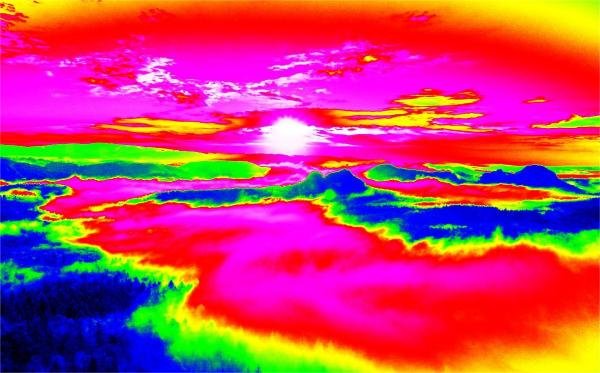Noticias del sector
¿Cuáles son las ventajas y desventajas de los infrarrojos de onda media? Diferencia entre infrarrojos de onda media e infrarrojos de onda larga
Infrared imaging technology is a technology that uses infrared radiation to obtain visible plane images of scenery. According to the different wavelengths of infrared radiation, it can be divided into short-wave infrared, medium-wave infrared and long-wave infrared.
In nature, all substances with temperatures higher than absolute zero will radiate infrared light, and mid-wave infrared propagates in the air according to the nature of its infrared radiation window, the atmospheric transmittance can be as high as 80% to 85%, so mid-wave infrared is relatively easy to be captured and analyzed by specific infrared thermal imaging equipment.

Infrared spectrogram
1.What are the advantages and disadvantages of mid-wave infrared?
Overall, mid-wave infrared has some obvious advantages:
1)Strong adaptability to the environment
Mid-wave infrared cameras can work normally under various weather conditions, are not affected by light, haze and other factors, and have good adaptability to the environment.
2)The detection distance is longer
Mid-wave infrared cameras can detect targets over a longer distance and are suitable for some scenarios that require target monitoring at longer distances.
3)The spatial resolution is higher
Mid-wave infrared cameras can provide higher spatial resolution and can help capture more detailed target information.
4)Sensitive to changes in heat
Mid-wave infrared cameras are very sensitive to changes in heat and can accurately detect the thermal radiation of targets and produce clear thermal images.

Infrared thermal imaging diagram
At the same time, the disadvantages of mid-wave infrared cannot be ignored:
1)Easily affected by atmospheric conditions
The transmission of the mid-wave infrared band is greatly affected by atmospheric factors. For example, weather conditions such as heavy fog and rain may cause image quality to deteriorate or detection capabilities to weaken.
2)The price is higher
Compared with other infrared bands, mid-wave infrared cameras are usually sold at a higher price and may not be suitable for some budget-constrained application scenarios.
3)The image processing algorithm is complex
The image processing algorithm of mid-wave infrared is relatively complex, which requires high requirements for equipment operators and maintenance personnel, and requires certain professional knowledge and experience.
4)The power requirements are higher
Mid-wave infrared cameras usually require a higher-power power supply, and power supply issues need to be considered when using them in mobile applications or off-grid.
The difference between mid-wave infrared and long-wave infrared
There are certain differences between mid-wave infrared and long-wave infrared in terms of infrared imaging, performance and application fields. Let’s take a look at them in detail below:
1)Different wavelength range
The wavelength range of mid-wave infrared is usually 3-5 microns, and the wavelength range of long-wave infrared is usually 8-14 microns. Therefore, long-wave infrared has a wider range of wavelengths and can detect longer wavelength infrared radiation.
2)Thermal-sensitive materials and response speeds vary
Most of the heat-sensitive materials used in mid-wave infrared are indium zinc tin compounds, and most of the heat-sensitive materials used in long-wave infrared are indium antimony compounds or mercury-tin compounds. Different heat-sensitive materials have different response characteristics to infrared radiation in different bands.
In comparison, mid-wave infrared heat-sensitive materials respond relatively quickly and can quickly capture changes in infrared radiation. Long-wave infrared heat-sensitive materials respond slowly and may have a certain lag for rapidly changing infrared radiation.

Medium wave infrared image
3)Thermal imaging resolution differs
Due to the influence of wavelength differences and thermal-sensitive material properties, mid-wave infrared has a higher thermal imaging resolution than long-wave infrared.
In other words, mid-wave infrared can display hot spots and details more clearly, and is more suitable for scenes that require high image quality, such as the development and manufacturing of night vision devices, cameras and other products.
4)Different ability to adapt to the environment
Relatively speaking, long wave infrared is more suitable for use in environmental conditions with good atmospheric transmission, such as fire warning, thermal imaging and other fields; Mid-wave infrared has strong adaptability to the environment and can be applied in harsh environments such as haze and smoke.
5)Performance differs in temperature detection
Mid-wave infrared technology is more effective in biological detection, because the thermal radiation of the human body is mainly concentrated in the 3-5 micron band, while long-wave infrared technology is more suitable for applications such as atmospheric greenhouse effect research.

